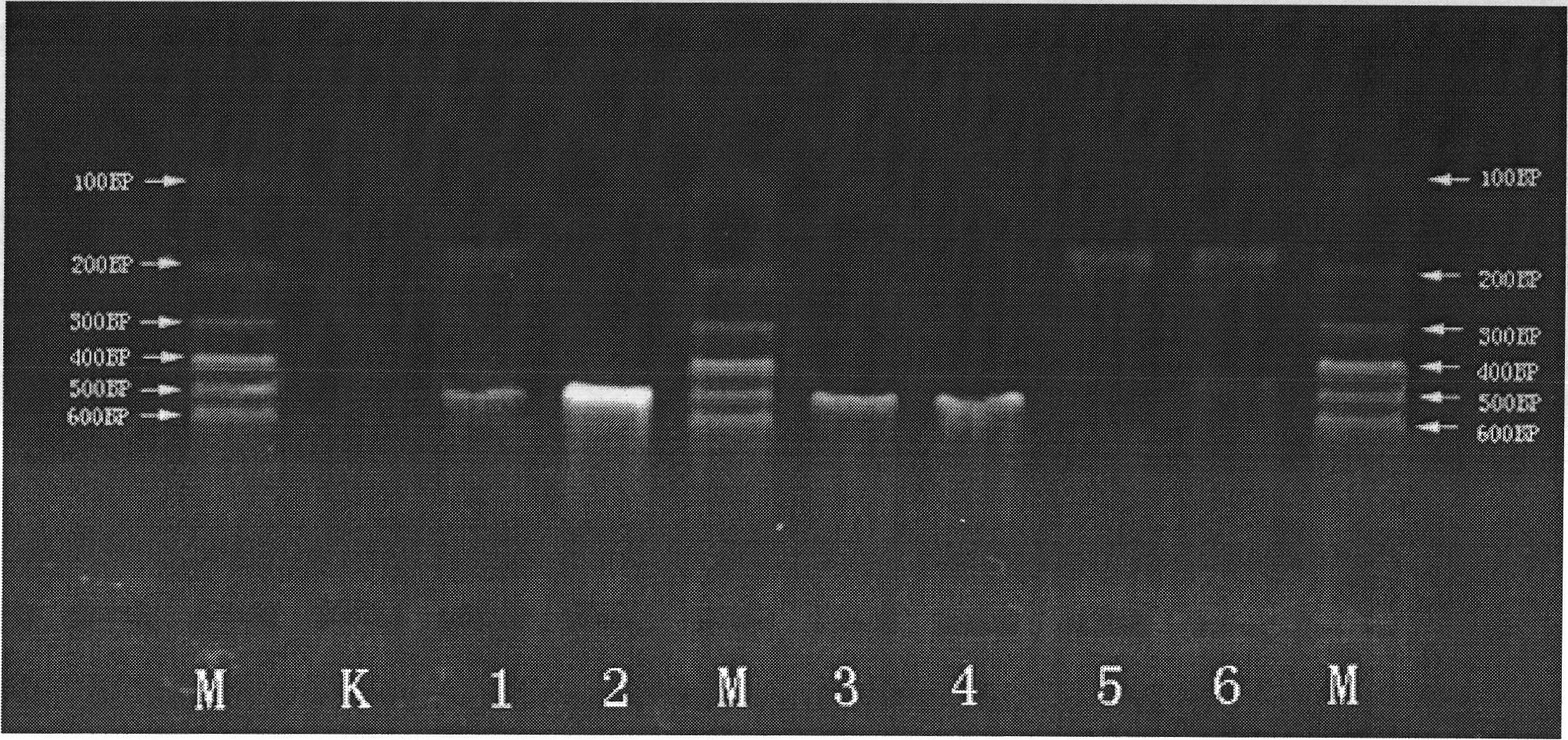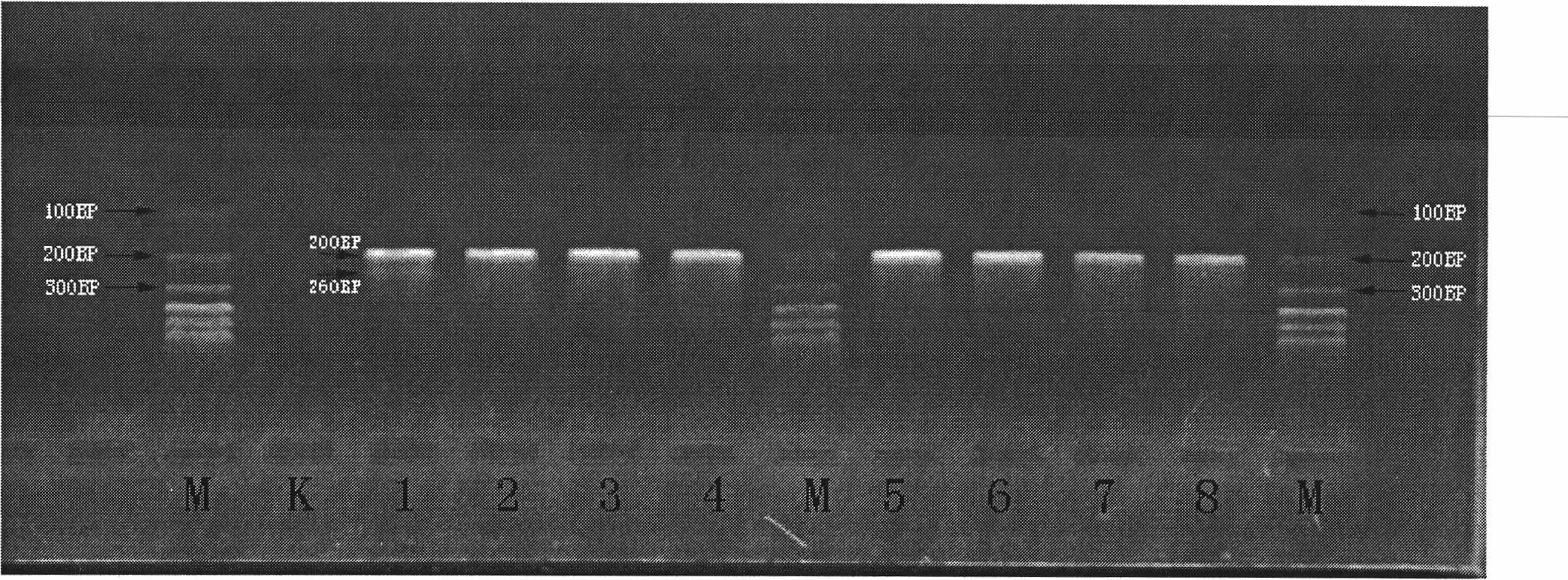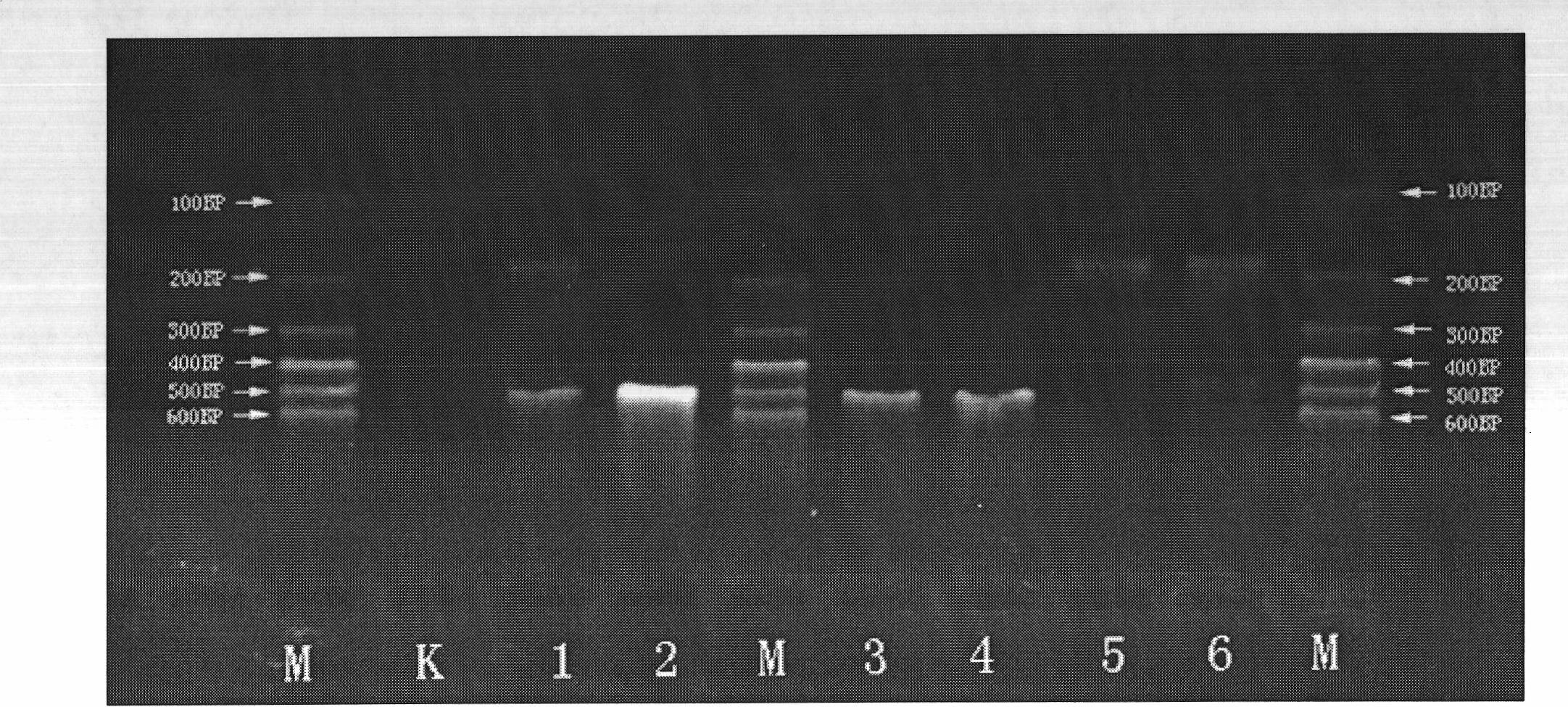Multiple polymerase chain reaction (PCR) kit and method for detecting mosquito-borne pathogens
A technology of pathogens and kits, which is applied in the genetic detection of mosquito-borne pathogens and the field of multiple PCR kits for detection of mosquito-borne pathogens, which can solve the problems of low sensitivity, inability to detect multiple mosquito pathogens at the same time, and high cost
- Summary
- Abstract
- Description
- Claims
- Application Information
AI Technical Summary
Problems solved by technology
Method used
Image
Examples
Embodiment 1
[0089] A kind of multiplex PCR kit for detecting mosquito-borne pathogens of the present invention contains following primers:
[0090] 1) Detection of primers for the first round of PCR of flaviviruses
[0091] The sequence of the upstream primer is shown in SEQ ID NO: 1,
[0092] The sequence of the downstream primer is shown in SEQ ID NO: 2;
[0093] 2) Detect the primers of the second round PCR of flavivirus
[0094] The sequence of the upstream primer is shown in SEQ ID NO: 3,
[0095] The sequence of the downstream primer is shown in SEQ ID NO: 4;
[0096] 3) Primers for the first round of PCR to detect Plasmodium
[0097] The sequence of the upstream primer is shown in SEQ ID NO: 5,
[0098] The sequence of the downstream primer is shown in SEQ ID NO: 6;
[0099] 4) Primers for the second round of PCR detection of Plasmodium
[0100] The sequence of the upstream primer is shown in SEQ ID NO: 7 or shown in SEQ ID NO: 8,
[0101] The sequence of the downstream pri...
Embodiment 2
[0127] The present invention also provides a method for detecting mosquito-borne pathogens, including a step of extracting mosquito nucleic acid, a step of amplifying the extracted nucleic acid on a PCR amplification instrument, and a step of amplifying the amplified product The step of electrophoresis detection also includes the step of sequencing to determine the specific species of mosquito-borne pathogens.
[0128] Further, in a step of amplifying the extracted nucleic acid on a PCR amplification instrument,
[0129] 1) Detection of primers for the first round of PCR of flaviviruses
[0130] The sequence of the upstream primer is shown in SEQ ID NO: 1,
[0131] The sequence of the downstream primer is shown in SEQ ID NO: 2;
[0132] 2) Detect the primers of the second round PCR of flavivirus
[0133] The sequence of the upstream primer is shown in SEQ ID NO: 3,
[0134] The sequence of the downstream primer is shown in SEQ ID NO: 4;
[0135] 3) Primers for the first r...
Embodiment 3
[0147] Example 3 The steps for detecting mosquitoes carrying Plasmodium (Plasmodium falciparum, Plasmodium vivax, Plasmodium knowlesi, Plasmodium ovale, Plasmodium malariae and Filaria malayi) are described as follows:
[0148] a. Extraction of nucleic acid: Take a single mosquito (Anopheles stepheni) and grind it into a 1.5ml centrifuge tube until it is completely ground into powder. Use Tiangen DNA Extraction Kit DP304 (Beijing Tiangen) to extract DNA according to the instructions.
[0149] b.PCR amplification:
[0150] The first round of PCR conditions
[0151] 10×Buffer 5μL
[0152] dNTP (2.5mM) 4μL
[0153] BSA (5mg / ml) 1μL
[0154] FP (10μM) 1μL each (filariae Plasmodium first-round PCR primers)
[0155] 1 μL each of RP (10 μM) (the first round of PCR primers for filarial plasmodium)
[0156] DNA template 1.5 μL
[0157] EXTaq 0.4μL (2U)
[0158]wxya 2 O 34.1 μL
[0159] PCR cycling parameters
[0160] 1. 94℃ 4Min
[0161] 2. 94℃ 25Sec
[0162] 3. 56℃ 20Sec ...
PUM
| Property | Measurement | Unit |
|---|---|---|
| concentration | aaaaa | aaaaa |
Abstract
Description
Claims
Application Information
 Login to View More
Login to View More - Generate Ideas
- Intellectual Property
- Life Sciences
- Materials
- Tech Scout
- Unparalleled Data Quality
- Higher Quality Content
- 60% Fewer Hallucinations
Browse by: Latest US Patents, China's latest patents, Technical Efficacy Thesaurus, Application Domain, Technology Topic, Popular Technical Reports.
© 2025 PatSnap. All rights reserved.Legal|Privacy policy|Modern Slavery Act Transparency Statement|Sitemap|About US| Contact US: help@patsnap.com



